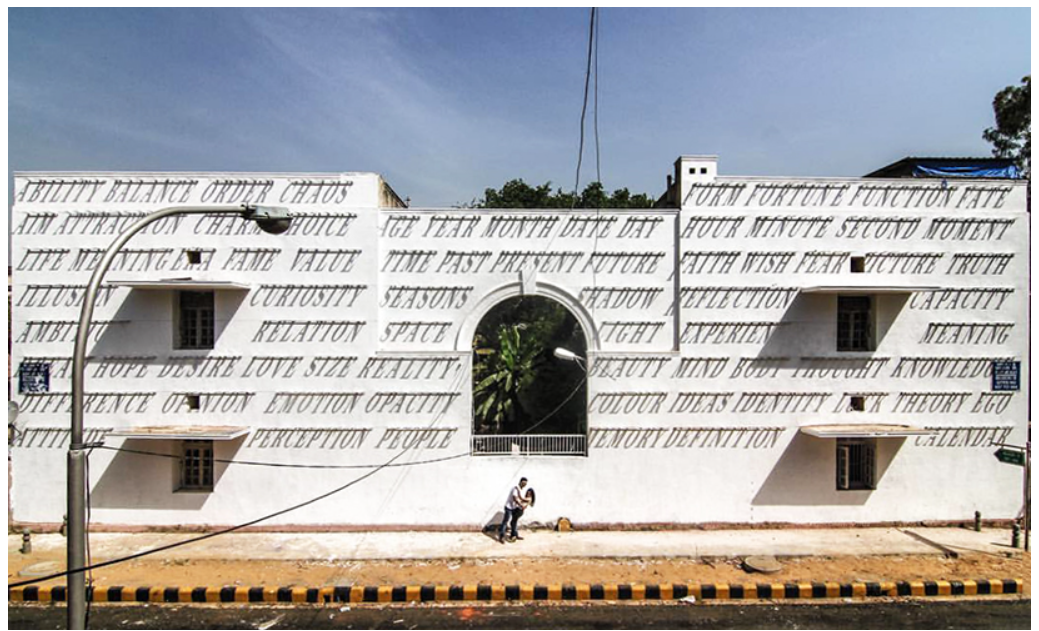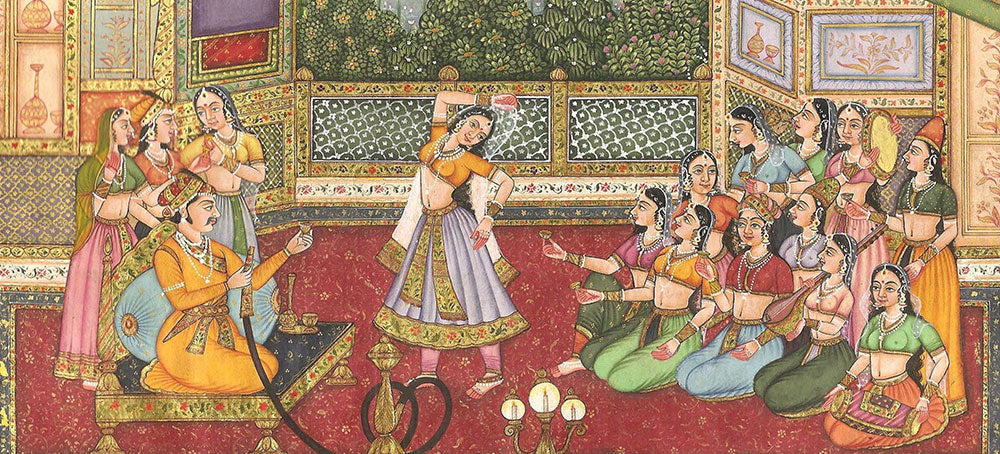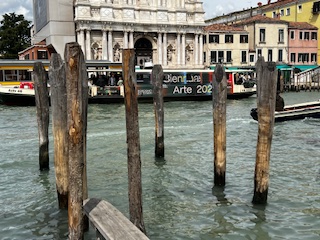
Abanindranath Tagore, Bharat Mata, 1904 Image Credit: https://www.thehindu.com/news/cities/kolkata/abanindranaths-bharat-mata-on-display/article6949692.ece
Art as a Catalyst for Social Commentary: Exploring Its Evolution and Impact in India
Art has long been recognised as a powerful medium for social commentary, mirroring society's triumphs, struggles, and aspirations. From ancient cave paintings to contemporary installations, artists have used their creative voices to provoke thought, challenge norms, and inspire change. By capturing the essence of their times, artists provide a visual and emotional record of human experiences, often highlighting injustices and envisioning a better future. In the context of India, a country with a rich history of artistic expression and social activism, the role of art as a medium for social commentary is particularly significant. This tradition has evolved from the intricate carvings and murals of ancient temples to the dynamic and diverse practices seen in modern and contemporary art forms.
Throughout history, artists in India have drawn inspiration from the socio-political landscape, channelling their observations and critiques into their work. During colonial rule, artists like Raja Ravi Varma depicted the complex interactions between Indian traditions and Western influences, subtly critiquing the colonial presence. In the struggle for independence, the Bengal School of Art, led by figures such as Abanindranath Tagore, sought to revive Indian cultural identity and resist colonial domination through indigenous artistic styles. Post-independence, artists like M.F. Husain and Tyeb Mehta addressed the social upheavals and cultural transitions of a newly independent nation. More recently, contemporary artists like Sheela Gowda and Subodh Gupta have explored themes of urbanisation, economic disparity, and globalisation. From caste discrimination to gender inequality, from environmental degradation to political corruption, Indian artists have addressed many societal issues through their art, sparking dialogue and fostering empathy. Their works serve as catalysts for conversations, challenging viewers to confront uncomfortable truths and reconsider preconceived notions.
Abanindranath Tagore’s ‘Bharat Mata’ is a seminal work in modern Indian art, created during the Indian independence movement. This painting depicts the personification of India as a serene, saffron-clad goddess holding a book, sheaves of rice, a piece of white cloth, and a garland. It symbolises India’s cultural heritage and spiritual values, serving as a unifying image for the nationalist movement. ‘Bharat Mata’ became an icon of Indian identity and freedom, inspiring the masses and fostering a sense of pride and unity among Indians during the struggle against colonial rule.
In 2005, a century after Abanindranath Tagore painted Bharat Mata in his new wash style in 1905, M.F. Husain created a provocative modernist nude version. The painting features the sun rising over the jagged Himalayas, with a svelte woman's torso and limbs whimsically outlining India's map. The spokes of the national flag's wheel mark the heartland. Important cities and places—Cochin, Chennai, Bangalore, Goa, Hyderabad, Kolkata, Mumbai, Jaipur, Varanasi, Delhi, and Srinagar—are inscribed on her body in English, along with Gujarat and Bhopal.

Bharat Mata by M.F Husain 2005, Acrylic on Canvas Image Credit: https://paintphotographs.com/
The woman is painted in deep red and saffron shades. Over the Bay of Bengal, a man is depicted meditating, and on the Arabian Sea, a ship is shown sailing. By anthropomorphising the land as the nude figure of the mother goddess, Husain attempts to separate nationalistic connotations from religion and Hinduism, linking the national identity of Indian citizens to the land itself. For him, 'India's humanity is important, not its borders.'

Shilpa Gupta, There is No Explosive in This, 2007 Interactive Installation and photographs Installation: Dimensions variable Image Credit: https://art-sheep.com/art-sheep-features-shilpa-gupta-2/
Moving on to contemporary times, in the work by Shilpa Gupta, titled ‘There is No Explosive in This, 2007,’ 100 bags were arranged in a flat on Pont Street, London. Each bag was covered in fabric with the text ‘There is no explosive here’ marked on it. Visitors were invited to select a bag and interact with it, whether by taking it for a walk, waiting at a bus stop, or travelling on the tube.
This piece encourages viewers to leave the gallery space and enter the public sphere carrying a bag emblazoned with the printed statement ‘There is no explosive here.’ This seemingly straightforward assertion engenders suspicion and uncertainty, not only for the individual carrying the bag but also for those encountered in public spaces who read the text. Gupta's work blurs the boundaries between artist, viewer, and artwork, fostering a dynamic interaction where all participants share responsibility. Through this, Gupta challenges entrenched racial and social stereotypes, while drawing attention to prevalent anxieties within contemporary society.
Another example is Reena Saini Kallat, who often blends multiple mediums in her artwork. Her work explores the endless cycles of nature and the fragility of the human condition, reflecting the constant interplay between birth, death, rebirth, construction, collapse, defeat, and resurgence. She frequently uses officially recorded names of people, objects, or monuments that have vanished without a trace. A recurring motif in her art is the rubber stamp, symbolising bureaucratic control and the ‘faceless state’ that both obscures and confirms identities. Since 2003, Kallat has infused her works with irony through the use of rubber stamps. In ‘Falling Fables,’ she used stamps bearing the addresses of missing monuments protected by the Archaeological Survey of India, creating forms of architectural ruins. This highlights the collapse and erosion of collective memory in India and globally.

Reena Saini Kallat, Falling Fables - 18, Mixed Media on Canvas Image Credit: www.artnet.com
Atul Dodiya's, ‘Broken Branches’ features nine glass-fronted wooden cabinets filled with hand-coloured photographs, artificial limbs, tools, found objects, and billboard paintings. With roots tracing back to Porbandar, Gandhi's birthplace, Dodiya channels his Gandhian heritage into this installation. Initially conceived as a tribute to memory, history, and time, the inclusion of broken limbs and prosthetics transforms the work into a meditation on repair, restoration, and resurrection—essential themes for contemplating a nation's intricate fabric.

Atul Dodiya, Broken Branches, 2019 Image Credit: https://www.knma.in/
Art has long been a mirror of society, reflecting its values, struggles, and aspirations. From the era of modern art to the present day, artists have used their work to comment on and critique societal issues. Pioneers to several contemporary figures have embedded narratives of social change, political critique, and cultural identity within their art. Their works serve as powerful commentaries on the world around them, capturing the complexities of the human condition and the ever-evolving social landscape. This tradition of intertwining art with societal reflection provides a foundation for the dynamic role Indian art continues to play today.
In this way, Indian art functions not only as a reflection of society but also as an agent of change. By engaging with social issues, artists can influence public opinion, raise awareness, and inspire collective action. The vibrancy and diversity of Indian art, coupled with its deep-rooted tradition of social engagement, ensure that it continues to be a vital force in the ongoing quest for social justice and cultural understanding. Through exhibitions, public installations, and digital platforms, contemporary Indian artists reach a global audience, further amplifying their impact and reinforcing the universal relevance of their messages.
As India continues to navigate its complex social and political landscape, the role of art in fostering dialogue, promoting empathy, and advocating for change remains as crucial as ever.















Leave a Comment